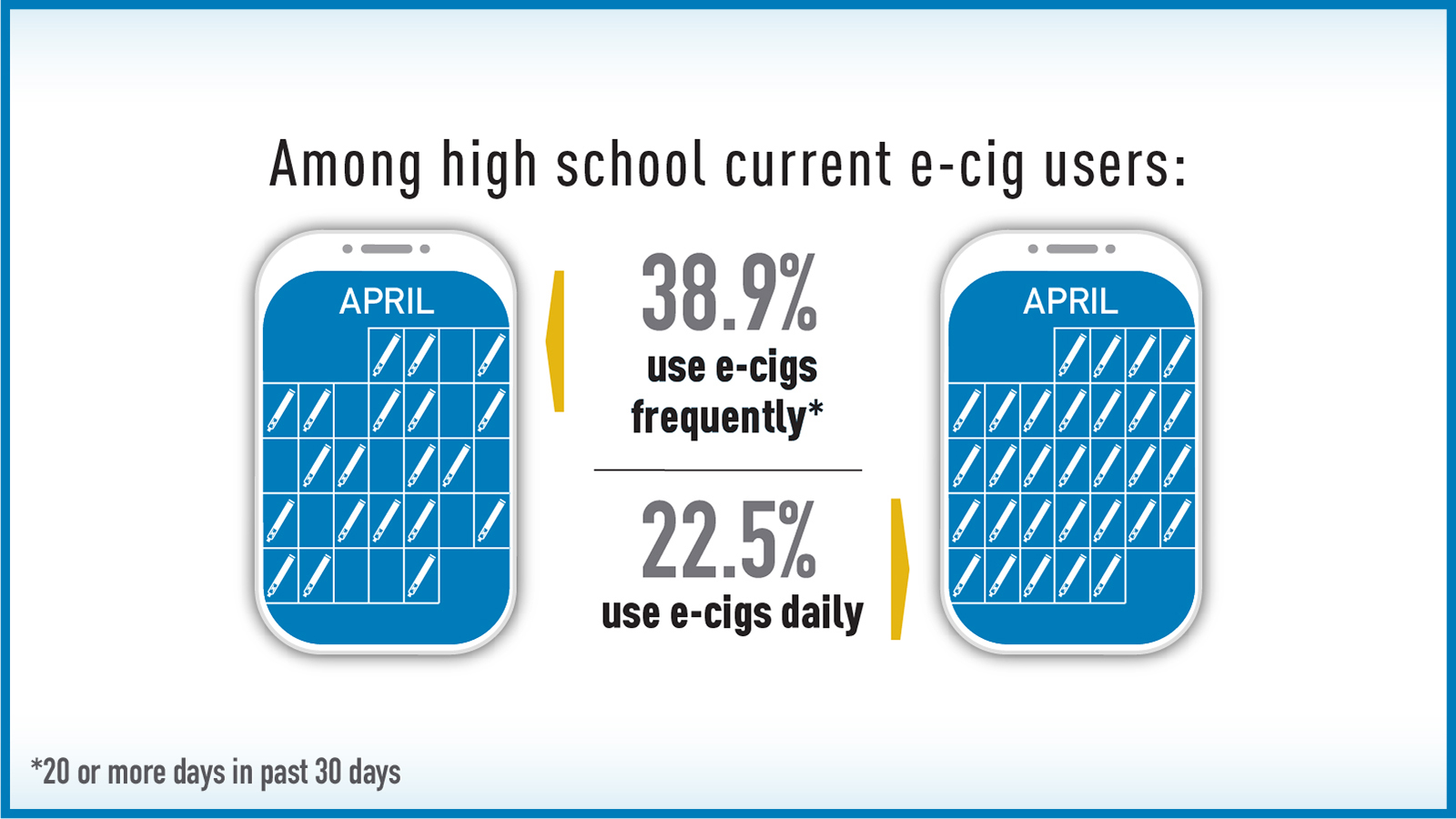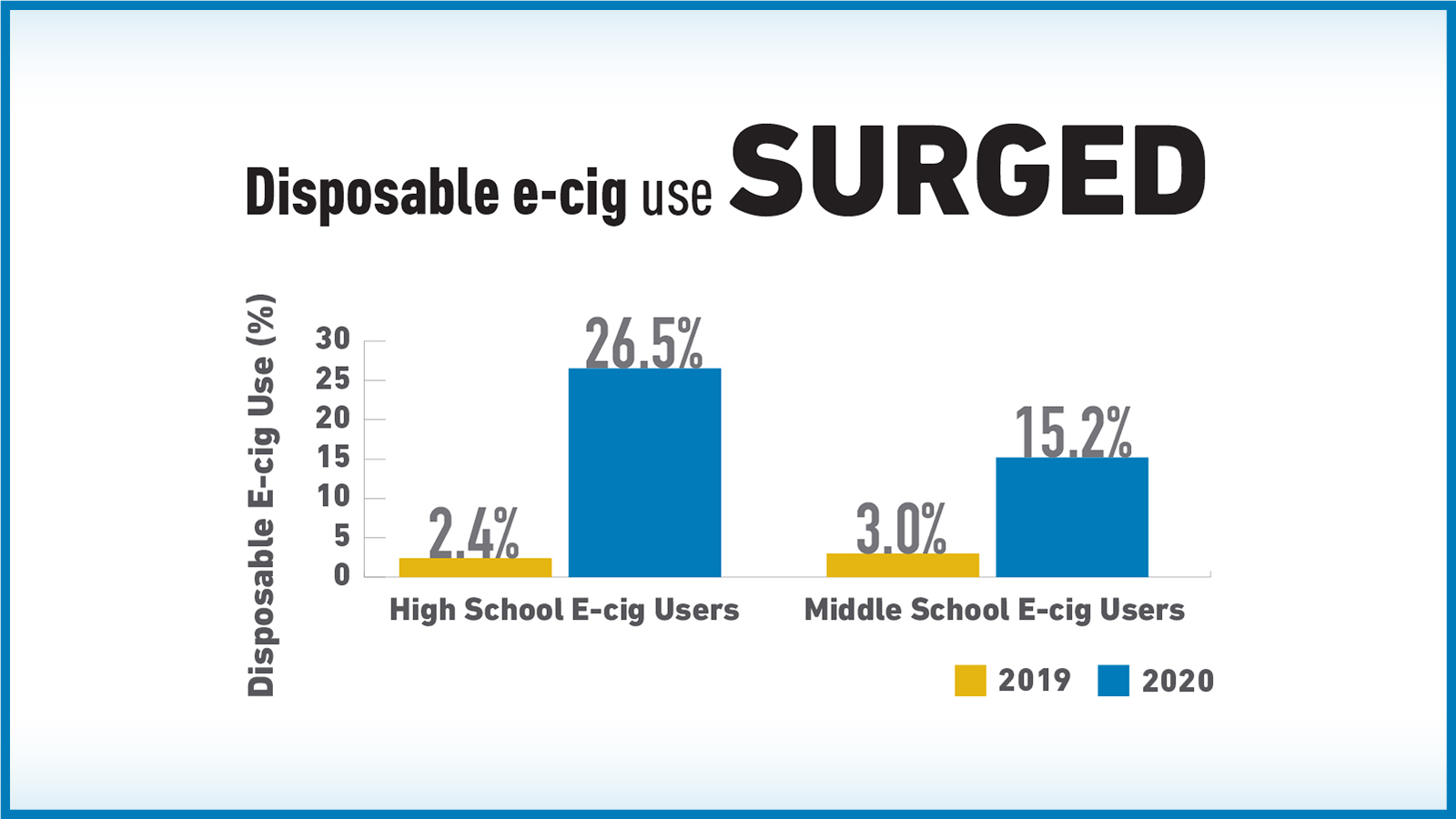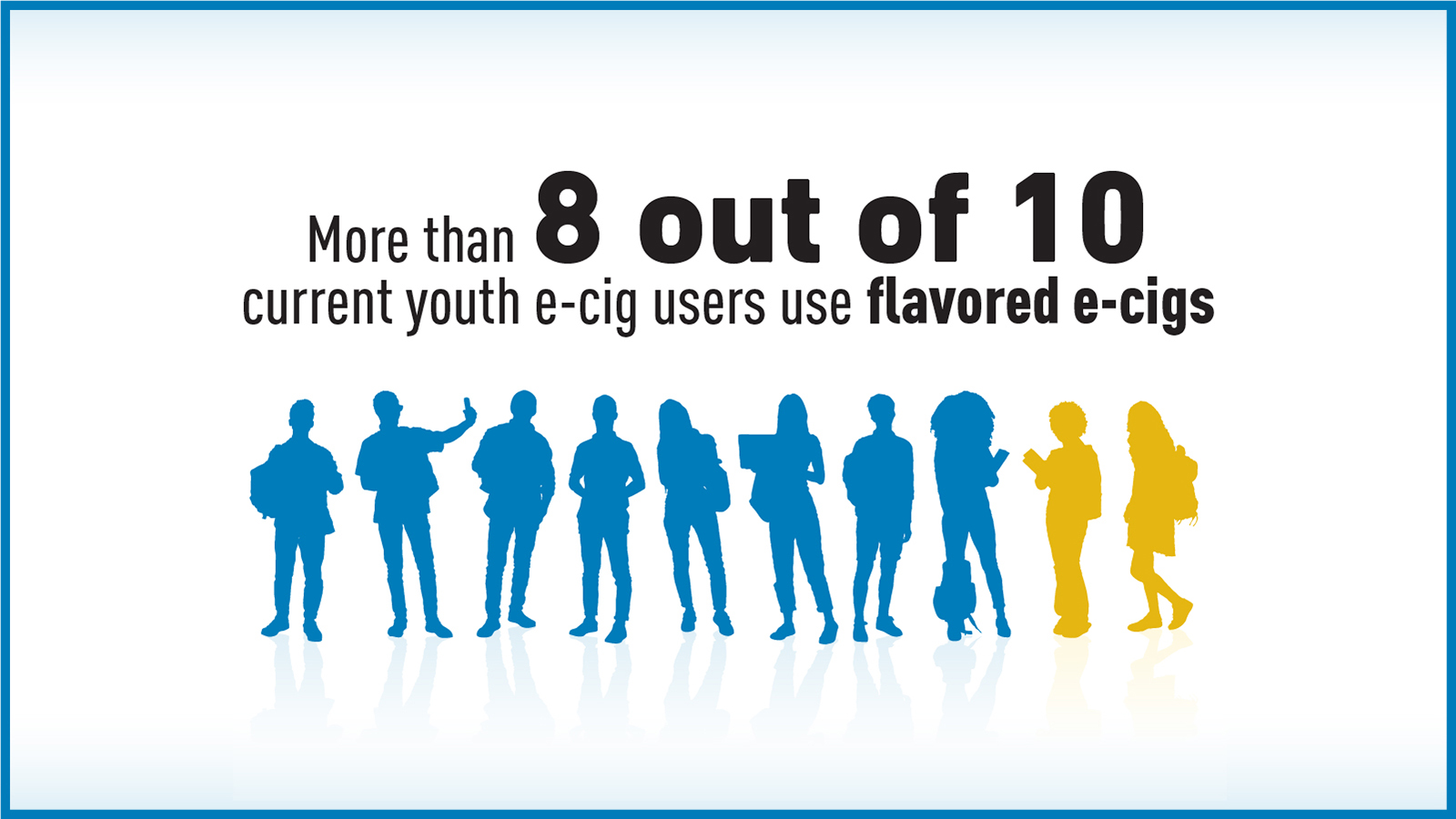Get the Latest Facts on Teen Tobacco Use
According to results from the latest National Youth Tobacco Survey (NYTS), 1.73 million fewer middle and high school students are using tobacco products in 2020 compared to 2019. A decrease in youth use of e-cigarettes (1.80 million) accounted for a large portion of the decline in overall youth tobacco use. Additionally, from 2019 to 2020, teen use of combustible tobacco products, multiple tobacco products, cigars, and smokeless tobacco decreased significantly.
Despite the declines in youth use of combustible tobacco products, there was no change in teen cigarette smoking from 2019 to 2020. Nor was there a change in youth use of hookah, pipe tobacco, or heated tobacco products from 2019 to 2020. Furthermore, rates of combustible tobacco use remain concerningly high: among youth who use any tobacco product in 2020, about 42 percent smoke combustible products.
Though FDA is encouraged by the declines in overall tobacco product use from 2019 to 2020, it remains very concerned about the 24 percent of high schoolers and 7 percent of middle schoolers who currently use tobacco products. Notably, 3.58 million youth currently using e-cigarettes is still far too many.
Though E-Cigarette Use is Down from 2019, Teen Use Remains Alarmingly High
Teen e-cigarette use has increased alarmingly in the United States in recent years. Though only a small percentage of teens used e-cigarettes in 2011, 28 percent of high school students and 11 percent of middle school students used e-cigarettes by 2019. In 2020, these numbers declined to about 20 percent of high schoolers and 5 percent of middle schoolers currently using e-cigarettes. While this is progress from last year, youth use of e-cigarettes remains a public health issue that is affecting children, families, schools and communities.
Frequent E-Cigarette Use Suggests a Strong Dependence on Nicotine
This year’s NYTS shows that a disturbing number of teens are using e-cigarettes on a regular basis. In fact, almost 40 percent of high school e-cigarette users are using on 20 or more days out of the month and almost a quarter of them use e-cigarettes every day. Middle schoolers also show disturbing signs of strong nicotine dependence, with a fifth of middle school users using e-cigarettes on 20 or more days in a month and nearly 10 percent of them using daily.
Teens are Using Disposable and Flavored E-Cigarettes
One concerning finding from the 2020 NYTS is the surge in youth using disposable e-cigarettes. A disposable e-cigarette is designed for a single use, and some of these disposable products cost as little as a few dollars each. A disposable e-cigarette can’t be recharged or refilled, so a consumer can just buy, use, and then throw it away.
Additionally, NYTS continues to show youth’s preference for flavored e-cigarettes. About 8 in 10 of youth e-cigarette users are consuming products with flavors like fruit, mint, candy and menthol. Among high school students who used flavored e-cigarettes, the most common flavors were fruit (73 percent), mint (56 percent), menthol (37 percent), and candy (36 percent). Among middle school students who used flavored e-cigarettes, the most common flavors were fruit (76 percent), candy (47 percent), mint (47 percent), and menthol (23 percent).
Where Do We Go from Here?
FDA is working hard to ensure that illegal e-cigarette products, especially those that attract and appeal to our children, are removed from the market. In early 2020, FDA began prioritizing enforcement against flavored, cartridge-based e-cigarettes, and other e-cigarettes that appeal to kids. In line with the recent uptick in youth use of disposable e-cigarettes, FDA notified several manufacturers of disposable e-cigarette brands to remove their products from the U.S. market. The recent Sept. 9 premarket submission deadline, which applied to e-cigarettes, marked a major milestone for ensuring new tobacco products – including many already on the market – undergo a robust scientific evaluation by FDA. We are diligently evaluating these applications, and FDA will only authorize these e-cigarette products if the science proves that, for example, their marketing is appropriate for the protection of public health. FDA will also continue to enforce the new minimum age of 21 to purchase tobacco products. In addition, while most of these FDA activities are aimed at curbing youth e-cigarette use, FDA will continue to consider and take appropriate actions based on the latest findings about youth use of all tobacco products.
Center for Tobacco Products
Exchange Lab
Embed CTP content on your website for free. Through The Exchange Lab, when content is updated on our site, it will automatically update on your site as well.
FDA makes significant investments in its public education campaigns to educate youth about the dangers of e-cigarettes, cigarettes, and smokeless tobacco, and works in partnership with other agencies and organizations. FDA has also collaborated with Scholastic to develop interactive e-cigarette prevention lesson plans for middle and high school teachers, available in English and Spanish on the Scholastic website. The content is tailored both for classroom and remote learning. Teachers and other adults may use these Scholastic resources to educate youth about the dangers of e-cigarettes. Adults may also want to offer free quit resources to a child who they believe may be struggling with addiction.
The combination of all these efforts and factors may have contributed to this year’s decline in youth tobacco use, but with 4.47 million teens still using tobacco products, our work to protect young people is not done.
Additional Resources
- Youth Tobacco Use: Results from the National Youth Tobacco Survey
- E-cigarette Use Among Middle and High School Students — United States, 2020
- Tobacco Product Use Among Middle and High School Students — United States, 2020
- Order Free Print Copies of the 2020 NYTS Infographic
- National Survey Shows Encouraging Decline in Overall Youth E-Cigarette Use, Concerning Uptick in Use of Disposable Products
- Scholastic E-Cigarette Prevention Lesson Plans





